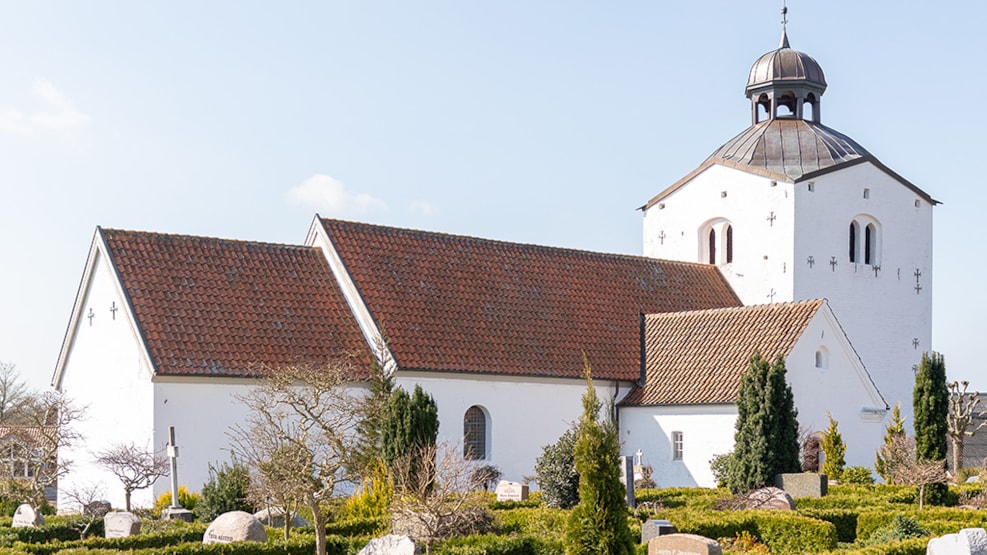
Tørring Church
In Tørring by the Gudenå River stands an old Romanesque church dating back to around 1200. The church is particularly distinctive on the outside with its wide, square tower, but it also features beautiful church art from various periods and intriguing frescoes.
Romanesque church in Tørring
The exact date of the construction of Tørring Church is unknown, but it is believed to be from around 1200—certainly within the period of 1150-1250, which is when most Danish village churches were built. It was constructed by local nobility and was originally situated some distance from the village of that time, but today it is near the center of town, just north of where the Gudenå River naturally divides the town in two. The word "Tørring" means "the dry place" and refers to the vast wetland surrounding the town. When the church was built, it stood alone with a fine view over the flat meadow and marsh landscape.
The ownership history of the church is typical for Danish village churches. After the Reformation in 1536, the church was confiscated by King Christian III. He later granted it to the lord of the local estate Stougaard, Erik Lunge. After that, the church was owned by various noblemen and gentry until 1916, when it became privately owned. Among its owners were a chancellor, chamberlain, colonel, lieutenant general, justice councilor, and even pharmacist Helm from Horsens.
Tørring Church inside and out
Like almost all other Danish churches, Tørring Church has undergone many additions and expansions over time. The chancel and nave are original and from around 1200. In the late Middle Ages, the church was significantly expanded, including the addition of a porch, extensions, and modifications. In the 17th century, the exceptionally large tower with its remarkable octagonal dome was built. In the 20th century, a larger side chapel was added.
Inside the church, you will quickly notice the striking and decorative frescoes from the 16th century. The paintings follow the church's vault and ceiling in red and blue colors, which harmonize beautifully with the church pews and create a stunning visual expression within the church. There are also biblical depictions, including Jesus teaching his disciples and bishop saints.
The beautiful pulpit dates from around 1625 and is painted black with gold leaf. The images on the pulpit depict the evangelists. The oldest furnishings in the church is the Romanesque font, which has probably always stood in the church.
Want to visit Tørring Church?
The church is open when the caretakers are present. This means on weekdays during normal working hours. It is often open during this period, but it may be closed if the caretakers are attending to the parish's other churches.
More historical attractions
The Kystlandet region offers many exciting historical attractions, ranging from ancient to industrial history. From museums to architectural works and natural attractions. On this page, you can find inspiration for historically interesting experiences near Horsens, Odder, and Juelsminde.